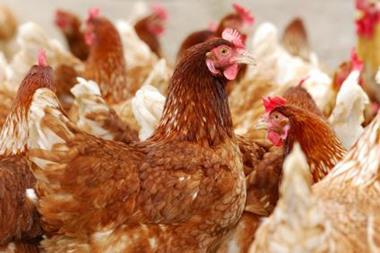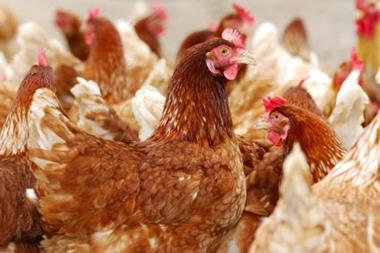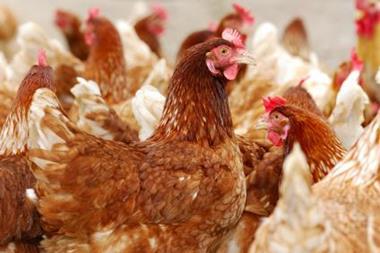Currently H5N1 is not in itself a business threat except to the poultry industry, says broker
The type of bird flu found in turkeys on a Suffolk farm is the virulent H5N1 strain, according to reports.
Following the outbreak of H5N1 in Suffolk, Marsh, outlines the risks implications for British businesses arising from Avian Flu and a subsequent human pandemic.
The following is a brief synopsis of what the broker said:
Humans can catch Avian Flu, but only from close proximity and handling of birds. It is deadly, with >50% mortality worldwide. It is a big threat to poultry, although factory farms are well-protected, and a BSE style spread of the disease is unlikely. The outbreak in Suffolk may imply there is greater incidence of H5N1 in the wild than previously thought, and people in contact with birds should take extra care.
Currently H5N1 is not in itself a business threat except to the poultry industry. UK businesses in the poultry industry should take it very seriously if they are not already doing so. In Marsh’s experience of this sector there are already very high standards of hygiene and safety, and businesses have already planned for an outbreak of this nature.
Pandemic flu arising from a mutation of H5N1 would be less deadly than Avian Flu, but could lead to 50% absence from work at the peak, and therefore is a major business threat. The outbreak in Suffolk makes this no more likely to happen. The required mutation is more likely to occur in parts of the world where people live in close proximity to livestock, and will spread from there.
The time to be really concerned is when a mutation is reported that allows the virus to be transmitted from human to human. At that point it may be only a matter of weeks before it jumps continents - and is likely to lead to immediate extensive restrictions on travel, and possibly the passage of some goods. This is a real threat and businesses should take precautions.
Wildlife and poultry issues
The outbreak of H5N1 poses a major threat to the UK’s poultry sector. While steps are being taken isolate the outbreak, organisations in this sector must take the threat seriously.
Organisations that deal with birds (or other livestock in close proximity to poultry) must have emergency response plans in place to identify any outbreaks and to put in place any necessary isolation and control measures to ensure the safety of staff and minimise the risk of spread.
Marsh also recommends that such organisations need to think beyond these immediate responses, and have plans in place that minimise the impact on their businesses and other businesses in their supply chains. These plans might include a controlled shut down of the business for a period.
Human mutation
H5N1 is still a form of Avian Flu which has not mutated into human form. While there have been cases of human infection, at this point human-to-human spread is not proven, but we believe it is prudent to prepare for a potential worst case scenario.
While many firms in the UK have business continuity plans to deal with a wide range of potential disruptions, they may not be adequately prepared for a pandemic, such as that associated with the possible human-to-human spread of a potential mutation of the current strain of Avian Flu.
A human pandemic could escalate quickly, last for many months, and infect 25 percent or more of the world’s population, according to public health experts. Many organisations believe that at the peak of a pandemic, up to 50% of the workforce may be absent from work. To address this risk, firms may need to examine and amend their existing business-continuity plans.
Marsh recommends that management should review their firm’s risk management controls, human resource policies, and communications capabilities, and update them based on the threat of a pandemic, as such an event could mean having fewer people, losing certain critical people, or having staff work from home or other remote locations.
The main thrust of pandemic preparedness planning for businesses should be to reduce the peaks of absenteeism.
In addition, businesses need to assess how a pandemic might affect services from suppliers and vendors, both domestically and overseas - in particular, in areas where incidence of the disease may be concentrated.
Defra said at 16:00 on Tuesday
Following further test results from the Veterinary Laboratories Agency (VLA) the Acting Chief Veterinary Officer has confirmed that the strain of Avian Influenza present at the Infected Premises near Diss is the highly pathogenic H5N1 strain. Further characterisation of the virus is in progress, which may give an indication of the origin of the strain.
Local authorities and Animal Health are enforcing a 3km Protection Zone, a 10km Surveillance Zone and a wider Restricted Zone covering the whole of Suffolk and most of Norfolk around the Infected Premises. In these zones, movement restrictions will be imposed and poultry must be isolated from wild birds. In addition, it has been announced that the national general licence on bird gatherings has been revoked, and bird shows and pigeon racing will not be permitted for the time being.
A full epidemiological investigation and tracings of any dangerous contacts are underway and all possible sources of the outbreak will be investigated.



















No comments yet